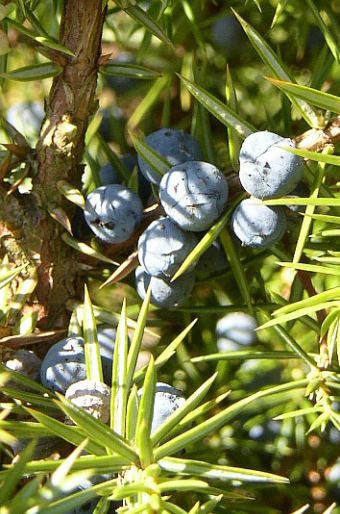Family: Cupressaceae Bartl.

Distribution: Europe, Asia, North America – from Iceland and Ireland through Siberia and Japan to California and Nova Scotia. The Common Juniper is the most widespread juniper species, and many subspecies and varieties have been described. The nominate subspecies occurs in Europe and Siberia.
Ecology: It grows on pastures, rocky slopes, edges of woods, moorland, from lowlands to mountains.
Description: A coniferous evergreen shrub or a small tree with conical crown, 5–15 m high. Needles stiff, grey-green, in trimerous whorls. The plant is dioecious – the female cones are green, the male cones yellowish. The berry-like globose fruits are green at first, then blue-black when ripe in the second year.
Threat and protection: The Common Juniper is a protected species in Czechia.
Use: The dried berries are used on their own in an infusion or in tea mixtures for dropsy and bladder and kidney disorders, the wood is used for the same purposes but it is not as potent as the berries.
Note: This species and several American and Asian species is also often cultivated.





These images were taken in Czechia, Švařec (September 25, 2003).


